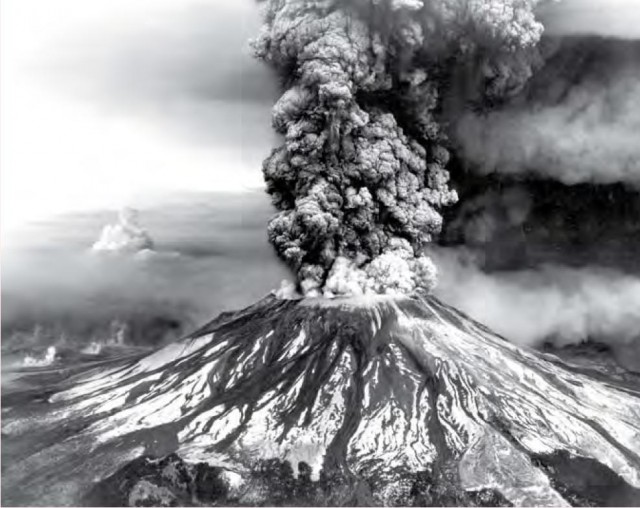Killer volcanoes
It is rare for volcanoes to kill in numbers comparable to the death tolls associated with large earthquakes. However, the US Geological Survey lists 35 volcano eruptions since 1500 that are recorded as killing over 300 people each. The list is probably not perfect, because for much of history, birth registers, electoral registers and the like were unknown or imperfect.
In 1996 and 1997, the Soufriere Hills volcano on the small West Indian island of Montserrat killed twenty people, buried the island's capital under 12m of mud, and forced two-thirds of the population to flee abroad. The damage occurred even though the volcanism had been preceded by known precursors of a major eruption such as swarms of earthquakes, mud flows, ash eruptions and dome-swellings.
In 1991 the eruption of Mount Pinatubo in the Philippines caused over 800 deaths and widespread destruction as it covered over 100 square kilometres of Luzon Island in volcanic ash.This eruption produced a new 2.5km caldera (a wide volcanic crater) at the top of the volcano, which lost 300m in altitude.
About 23,000 people were killed in the 1985 eruption of Nevada del Ruiz in Colombia. This volcano has been active for many centuries and its very acidic lava means big explosions. Most of the casualties were in the town of Armero, which was overwhelmed by a lahar, a mudflow of volcanic material. Most extraordinary were the events of May 1902 in the West Indies. On the 7th, the Soufriere volcano in St Vincent erupted, killing nearly 1,700 people, and a day later Mount Pelee erupted in Martinique, destroying the city of Saint-Pierre and killing perhaps 28,000 people. The type of eruption involved, with
very damaging red-hot avalanches called nuees ardentes, is called Pelean as a result of this disaster.
Further back in history, the eruption of Krakatau (Krakatoa) in Indonesia in 1883 may have killed about 36,000 people and is thought to have produced waves detectable in Europe. Ash fell over 1000km away and 40m-high waves devastated some 165 coastal villages. Barometers all over the world detected the pressure changes from the eruption. Admirers of J.M.W. Turner's sunsets may be interested to know that their peculiar intensity could well be a reflection of increased levels of dust in the atmosphere after the eruption. This may also explain the blood-red sky in Edvard Munch's The Scream.
The 1815 eruption of Tambora in Indonesia is probably the most deadly ever, with a direct and indirect death toll of nearly 100,000. About 50 cubic kilometres of material was blown into the sky.This eruption and others in Iceland may have been the cause of the “year with no summer”, 1816, which led to widespread suffering and starvation in Canada, the eastern US and Europe. In that year, global temperatures were about 3° lower than usual. The 1991 eruption of Pinatubo is credited with causing a 10 temperature drop. The most famous volcanic eruption ever was the destruction of Pompeii and
Herculaneum by Vesuvius in Italy in 79 AD. The death toll must have been tens of thousands.
The most observed volcanic eruption ever is likely to have been that of Mount St Helens in Washington State in 1980, simply because the full scientific resources of the US were available to monitor it. It removed 400m from the height of the mountain, created a new 350m-deep crater and covered an area of 60 square kilometres under a landslide, probably the biggest ever observed. Pyroclastic flows and lahars caused further damage. But'only” 57 people were killed because of the advance warnings that had been issued. The ash cloud was 25km high just 15 minutes after the eruption began.
